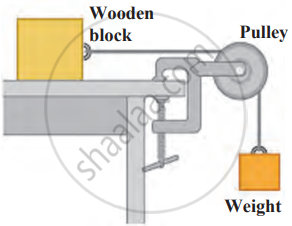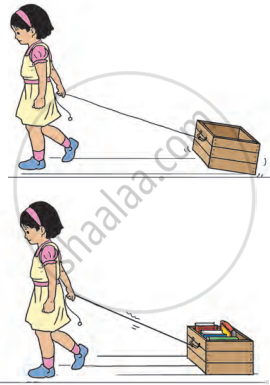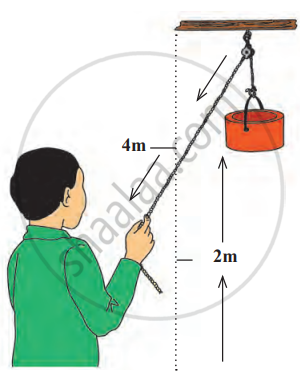Topics
Natural Resources – Air, Water and Land
- Natural Resources
- Atmosphere and Its Layers
- Air Around Us
- Composition and Components of Air
- Importance of Air
- Air Pollution and Its Causes
- Water: Our Lifeline
- Availability of Water
- Composition of Water
- Importance of Water
- Scarcity of Water
- Land
- Soil Formation
- The Importance of Conserving Earth’s Natural Resources
The Living World
Diversity in Living Things and Their Classification
Disaster Management
Substances in the Surroundings –Their States and Properties
Substances in Daily Use
Nutrition and Diet
- Nutrients and Nutrition
- Component of Food
- Carbohydrates
- Diseases Due to Deficiency of Carbohydrates
- Fats (Lipids)
- Diseases Due to Deficiency of Fats
- Proteins
- Diseases Due to Deficiency of Proteins
- Vitamin and Minerals
- Diseases Due to Deficiency of Vitamin
- Diseases Due to Deficiency of Minerals
- Fibre
- Diseases Due to Deficiency of Fibre
- Water
- Diseases Due to Deficiency of Water
- A Balanced Diet
- Nourishment and Malnutrition
- Food Adulteration
Our Skeletal System and the Skin
Motion and Types of Motion
Force and Types of Force
Work and Energy
- Force, displacement and work
- Energy
- The relationship between work and energy
- Forms of Energy
- Mechanical Energy
- Power Plants Based on Thermal Energy
- Light Energy
- Sound energy
- Chemical Energy
- Transformation of Energy
- Energy Resources
- Conventional energy resources or non-renewable energy resources
- Non-conventional energy resources or renewable energy resources
- Energy saving and green energy
Simple Machines
Sound
Light and the Formation of Shadows
Fun with Magnets
The Universe
- Introduction of Work
- Experiment 1
- Experiment 2
Introduction of Work:
When an object is displaced by applying a force to it, work is said to be done.
1. For work to be done, two things must happen:
- Force is applied: A push or pull is required.
- Displacement: The object must move or change its position.
For example, pushing a toy car and making it move means work is done because the car moves due to the applied force.
2. If force is applied but the object does not move, no work is done.
For example, trying to push a wall, but it doesn’t move, means no work is done even though force was applied.
More work is done for the same displacement when more force is applied to do the work. If the same force is applied for more displacement, more work is done by the force.

Work
In the figure alongside, a string, attached to a wooden block on a table, is passed over a pulley and tied to a weight. On applying a sufficient weight, the block will be seen to move. If the block moves forward, we can say that it has been displaced. Due to the displacement, we say that the force has done some work. We know that work done depends on the force and the displacement.
The following formula expresses this relationship:
Work (W) done by the force = force (F) applied to the body × displacement (s) of the body that takes place in the direction of the force,
W = F × s
- In the SI system, the unit of work is joule (J), while the unit of force is Newton (N) and the unit of displacement is meter (m).
- In the CGS system, the unit of work is erg.
If a force of 1 N parallel to the surface of the table is applied to a wooden block on the table and the block is displaced by 1 metre, then it can be said that the force has done 1 Joule of work.
In this example, the displacement is in the direction of the force.
Experiment 1
1. Aim: To observe how the amount of work changes when force and displacement are varied.
2. Requirements: an empty box, string, 20 books, and measuring tape (to measure distance).
3. Procedure
- Step 1: Tie a string to an empty box. Pull the empty box through a distance of 10 meters along a straight line.
- Step 2: Now fill the same box with 20 books. Pull the box again through a distance of 10 meters along a straight line. Observe and note the difference in effort compared to pulling the empty box.
- Step 3: Now, pull the loaded box through a distance of 20 meters in a straight line. Compare the effort required for pulling the loaded box for 10 meters versus 20 meters.
4. Conclusion: More work is done when more force is applied, such as pulling a heavier box (loaded with books). For the same distance, pulling the heavier box requires more effort, meaning more work is done.
Similarly, pulling the same box (with the same weight) over a longer distance results in more work because the displacement is greater. This shows that both force and displacement affect the amount of work done.

Pulling a box
Experiment 2
1. Aim: To observe how the amount of work changes when the displacement is increased while using the same amount of force.
2. Requirements: a pulley, string, 2-kilogram load, measuring tape (to measure height).
3. Procedure
- Step 1: Fix the pulley at a height. Draw a string over the pulley. Tie a load of 2 kilograms at one end of the string.
- Step 2: Hold the other end of the string and pull it downward to lift the load. First, lift the load to a height of 1 meter. Observe the effort and note how much work is done.
- Step 3: Now, continue pulling the string and lift the load to a height of 4 meters. Compare the effort required to lift the load 1 meter versus 4 meters.
4. Conclusion: When the load is lifted to a greater height (4 meters) than to a shorter height (1 meter), even though the same force is applied, more work is done. This shows that more work is done when there is greater displacement, meaning that both the force applied and the distance moved (displacement) must be considered when measuring work.

Using a pulley
